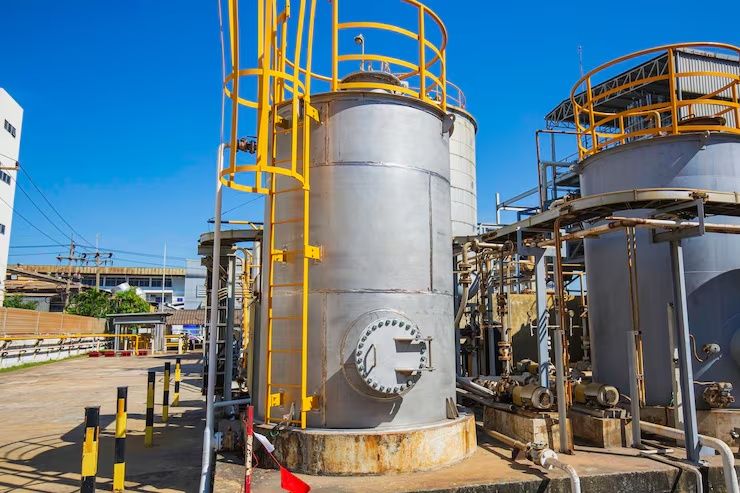Gas-liquid separation is a fundamental process in chemical, petrochemical, and industrial engineering where a mixture of gas and liquid phases is separated into its individual components. This process is essential for ensuring product quality, protecting equipment, and maintaining operational efficiency in industries such as oil and gas, chemical processing, wastewater treatment, and power generation.
Importance
Gas-liquid separation plays a critical role across multiple sectors:

-
Process efficiency: Removes gas from liquids to prevent equipment issues such as cavitation, foaming, or inaccurate flow measurements.
-
Equipment protection: Prevents damage to pumps, compressors, and turbines caused by gas entrainment.
-
Environmental compliance: Reduces emissions, prevents spills, and ensures cleaner effluent discharge.
-
Energy optimization: Improves heat exchanger performance and reduces unnecessary energy consumption.
-
Product quality: Ensures consistency in chemical, pharmaceutical, and petroleum products.
By improving operational safety, efficiency, and environmental compliance, gas-liquid separation is a vital part of industrial processes worldwide.
Recent Updates
Recent trends and technological developments in gas-liquid separation over 2023–2024 include:
-
Advanced materials: High-performance demisters and coalescing media improve separation efficiency and durability.
-
Automation and monitoring: Sensors and digital controllers allow real-time monitoring of pressure, flow, and separation efficiency.
-
Enhanced simulation tools: Computational fluid dynamics (CFD) software helps engineers optimize separator design and performance.
-
Sustainability trends: Energy-efficient separators and processes reduce environmental impact while maintaining high throughput.
-
Global adoption: Increasing use in emerging markets, particularly in petrochemical plants and water treatment facilities in Asia and the Middle East.
These updates reflect a focus on efficiency, environmental sustainability, and advanced process control.
Laws or Policies
Gas-liquid separation processes are subject to regulations and standards to ensure safety, environmental protection, and quality:
-
Environmental regulations: Agencies like the EPA (US) or EU environmental directives regulate emissions, effluent discharge, and pollution control.
-
Safety standards: ASME, API, and ISO standards provide guidelines for pressure vessels, separators, and industrial equipment safety.
-
Industry-specific requirements: Oil, gas, and chemical industries have specialized regulations for handling multiphase streams and hazardous materials.
-
Energy efficiency programs: Government initiatives may promote energy-efficient separation equipment to reduce operational environmental impact.
-
Waste management compliance: Proper disposal and treatment of separated liquids and gases must follow legal and environmental guidelines.
Adhering to these laws ensures safe, efficient, and environmentally responsible operation.
Tools and Resources
Several tools and resources help engineers, operators, and facility managers optimize gas-liquid separation:
-
CFD simulation software: Used to model separation efficiency, pressure drop, and flow patterns.
-
Separator sizing calculators: Online tools estimate dimensions, retention time, and throughput for different applications.
-
Maintenance guides: Step-by-step procedures for cleaning, inspection, and replacement of separator internals.
-
Monitoring systems: Digital sensors and IoT platforms track operational parameters in real time.
-
Industry associations: American Institute of Chemical Engineers (AIChE), International Association of Oil & Gas Producers (IOGP), and similar organizations provide standards, training, and research resources.
Example Table: Types of Gas-Liquid Separators
| Separator Type | Principle of Operation | Typical Applications |
|---|---|---|
| Gravity / Settling Tank | Uses density difference for separation | Water treatment, crude oil separation |
| Cyclone Separator | Uses centrifugal force to separate phases | Gas processing, chemical plants |
| Coalescer / Demister | Uses mesh or fiber media to coalesce droplets | Petrochemical, oil refineries |
| Packed Column | Gas-liquid contact over packing enhances separation | Chemical reactors, absorption processes |
| Membrane Separator | Selective gas permeation for separation | Natural gas dehydration, CO2 removal |
This table summarizes the main technologies used for efficient gas-liquid separation.
FAQs
What is gas-liquid separation?
It is the process of separating a gas phase from a liquid phase in multiphase industrial streams to ensure process efficiency and equipment safety.
Which industries use gas-liquid separation?
Petrochemical, chemical, oil and gas, wastewater treatment, pharmaceuticals, and power generation sectors commonly rely on this process.
Why is gas-liquid separation important?
It prevents equipment damage, improves process efficiency, reduces emissions, and ensures product quality.
What types of separators are commonly used?
Gravity separators, cyclone separators, coalescers, packed columns, and membrane separators are widely used, depending on the application.
How is separation efficiency measured?
Efficiency is measured by the percentage of gas removed from the liquid (or liquid removed from the gas) and by monitoring pressure drop, flow rate, and product quality.
Conclusion
Gas-liquid separation is a cornerstone of industrial and environmental engineering, ensuring efficient, safe, and sustainable operations across multiple sectors. With applications in petrochemical processing, wastewater treatment, pharmaceuticals, and power generation, separation technologies protect equipment, enhance process efficiency, and maintain product quality.
Recent advancements in compact designs, automated monitoring, advanced materials, and simulation tools highlight the ongoing innovation in this field. Compliance with safety, environmental, and industry-specific regulations ensures that operations remain safe, efficient, and legally compliant.
By understanding the principles, types, and applications of gas-liquid separation, engineers and operators can optimize industrial processes, reduce environmental impact, and maintain reliable, high-performance operations across diverse industries.